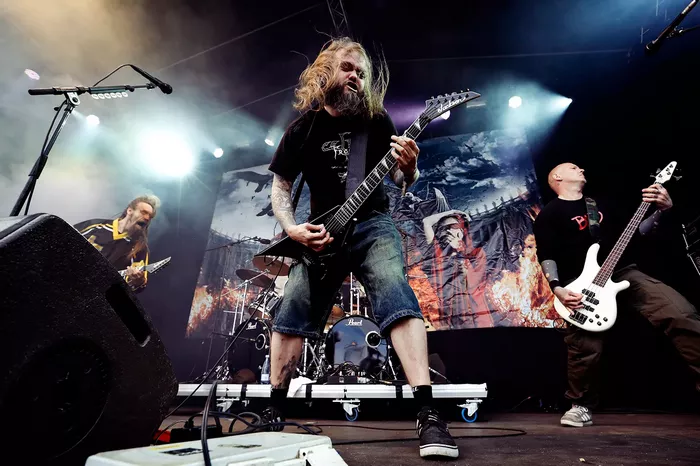Death metal, a genre known for its relentless aggression and dark aesthetics, has long captivated music enthusiasts with its unique vocal style. The unmistakable growls and guttural roars of death metal singers are as iconic as the thunderous guitar riffs and blast beats that define the genre. But what lies beneath this vocal technique, and why do death metal singers growl? In this in-depth exploration, we will delve into the origins, mechanics, cultural significance, and the artistic evolution of death metal vocals. Prepare to journey through the labyrinthine world of death metal, where the growl is both the gateway and the guardian of its sonic landscape.
I. The Origins of Death Metal Growls
To understand why death metal singers growl, we must first excavate the genre’s origins. Death metal emerged in the late 1980s as a subgenre of heavy metal, characterized by its extreme speed, intricate guitar work, and, of course, the distinctive growling vocals. Bands like Death, Possessed, and Morbid Angel paved the way for this genre, bringing with them a sound that pushed the boundaries of conventional singing. The growl, in its infancy, was a rebellion against the polished vocals of mainstream music—a primal scream that gave voice to the darkness lurking in the human psyche.
II. The Mechanics of the Death Metal Growl
The death metal growl is not a random guttural noise but a meticulously crafted technique. It involves a complex interplay of the vocal cords, the diaphragm, and the mouth. Unlike traditional singing, which emphasizes melody and pitch, death metal vocalists prioritize power and aggression. The growl is produced by forcing air through tightly constricted vocal cords, creating a deep, raspy sound. This distinctive vocal style is often likened to the guttural growls of predators in the animal kingdom—fitting for a genre with themes of brutality and the macabre.
III. The Evolution of Death Metal Vocals
As death metal evolved over the decades, so did its vocal styles. While the guttural growl remained a staple, singers began to experiment with different techniques. Some introduced pig squeals, high-pitched screams that added an extra layer of intensity to the music. Others incorporated melodic elements into their vocals, creating a contrast between the brutality of the music and the haunting beauty of the singing. These innovations expanded the possibilities of what death metal vocals could be, demonstrating that the growl was not a static expression but a canvas for artistic exploration.
IV. The Cultural Significance of Death Metal Growls
In the realm of death metal, growling is more than just a vocal technique; it’s a cultural signifier. The growl is a badge of honor, signaling authenticity and commitment to the genre. It sets death metal apart from other forms of heavy music, creating a sense of belonging for fans and musicians alike. Moreover, the growl serves as a vessel for conveying the genre’s lyrical themes, which often explore topics like death, the occult, and the existential abyss. In this sense, the growl is not just a sound but a storytelling device, a visceral connection between artist and audience.
V. The Physical Toll of Death Metal Vocals
The intensity of death metal growls exacts a physical toll on the vocalists who employ them. The sheer force required to produce these sounds can lead to vocal strain, nodules, and other vocal cord injuries. Many death metal singers must undergo rigorous vocal training and develop a keen awareness of their vocal health to maintain their signature growls over time. This dedication to their craft showcases the commitment of death metal vocalists to their unique art form.
VI. The Evolution of Recording Techniques
In the early days of death metal, recording techniques were often rudimentary, capturing the raw energy of the music but sometimes obscuring the nuances of the growls. However, as technology advanced, recording engineers developed methods to capture the full range and complexity of death metal vocals. Techniques such as multi-tracking and layering allowed vocalists to create a wall of sound, amplifying the impact of their growls. These advancements played a crucial role in shaping the sonic landscape of modern death metal.
VII. The Global Influence of Death Metal Growls
Death metal, with its growling vocals, has transcended its origins in the United States and Europe to become a global phenomenon. Bands from countries as diverse as Japan, Brazil, and Sweden have embraced the genre, adapting it to their own cultural contexts. In doing so, they have brought new perspectives and influences to death metal, enriching the genre and expanding its reach. The growl, as a universal language of brutality, has played a pivotal role in connecting death metal communities around the world.
IX. Conclusion
In conclusion, the growl is the beating heart of death metal, an integral element that defines the genre’s sonic identity. Its origins lie in rebellion, its mechanics in precision, its cultural significance in authenticity, and its evolution in innovation. The growl bridges the gap between the primal and the artistic, the brutal and the beautiful, the underground and the global. It is a testament to the enduring power of music to transcend boundaries and connect people through the raw and visceral language of sound. So, why do death metal singers growl? Because in the growl, they find a voice for the untamed darkness that resides within us all—a voice that continues to echo through the corridors of death metal’s unholy cathedral.

